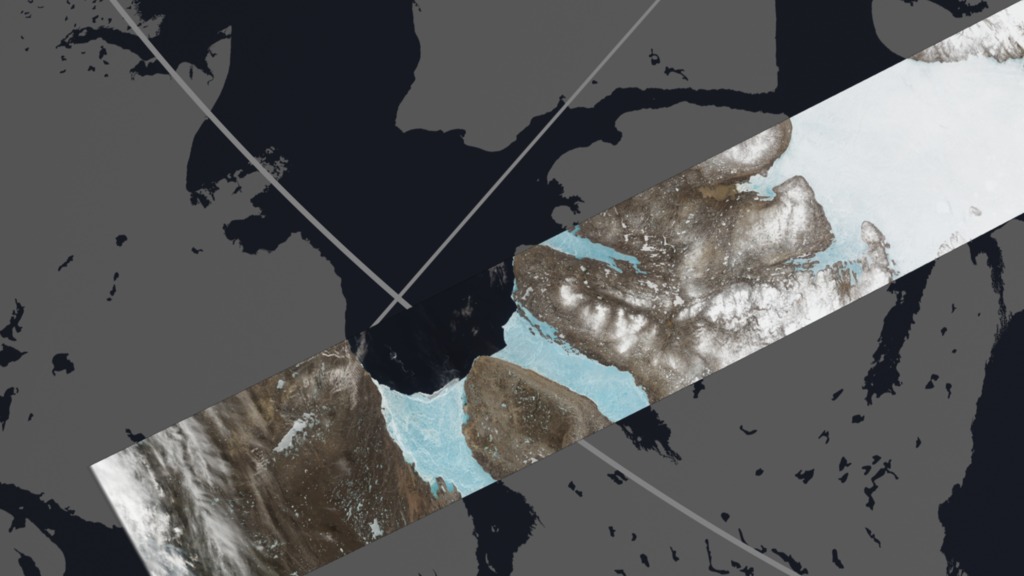A Long View Of The Arctic

Hitch a ride with a satellite as it takes flight over the Arctic on the summer solstice.
In the Arctic summer, there are days when the sun never sets. This period of extended sunlight offers the chance to observe long expanses of Earth’s northern latitudes from space. On June 21, 2014—the summer solstice—the Operational Land Imager on the USGS-NASA Landsat 8 satellite acquired an image swath that exhibits the Arctic’s sunlit, although sometimes cloud-covered, land and ocean features. The swath in its entirety stretches roughly 4,200 miles long by 120 miles wide. The scenes begin in Scandinavia, track across Greenland, and end in western Canada. Watch the video to fly along on a tour of Arctic landscapes.
While much of the Arctic is still frozen in June, the ice is in various stages of melting. See a satellite’s view of the region in this video.

Greenland’s Elephant Foot Glacier is a piedmont-type glacier, which form when ice spills from a steep valley onto a relatively flat plain.

The various stages of sea ice in the Amundsen Gulf include blue ice, first-year ice, dark grey ice, and brash ice.

On Canada’s Victoria Island, early season melt water carries sediment from glacial erosion into lakes, giving them a uniform green color.
For More Information
Credits
Please give credit for this item to:
NASA's Earth Observatory
Satellite images courtesy of NASA Earth Observatory/Jesse Allen
-
Producer
- Matthew R. Radcliff (USRA)
-
Animators
- Jesse Allen (Sigma Space Corporation)
- Robert Simmon (Sigma Space Corporation)
- Lori Perkins (NASA/GSFC)
- Paul Przyborski (SSAI)
-
Video editor
- Matthew R. Radcliff (USRA)
-
Writer
- Kathryn Hansen (SSAI)
Release date
This page was originally published on Tuesday, March 3, 2015.
This page was last updated on Wednesday, May 3, 2023 at 1:49 PM EDT.
![The Operational Land Imager (OLI) on Landsat 8 acquired this unbroken swath of images on June 21, 2014—the summer solstice—when the Sun stays above the horizon of the Arctic for at least 24 hours. While much of the region is still frozen in June, the ice is in various stages of melting.For complete transcript, click here.Watch this video on the NASA Earth Observatory YouTube channel.Music: Thin Ice Mining by Chris Constantinou [PRS], Paul Frazer [PRS] Melting Glacier by Chris Constantinou [PRS], Paul Frazer [PRS] Undiscovered Oceans by Aaron Yeddidia [BMI], Chris Lang [BMI], Eric Cunningham [BMI] Another Sleep by Chris Constantinou [PRS], Paul Frazer [PRS]](/vis/a010000/a011700/a011779/G2015-015_Arctic_Swath_MASTER_youtube_hq_print.jpg)
